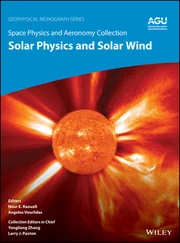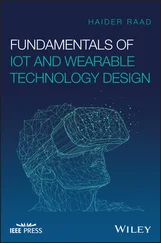1 Cover
2 Title page
3 Copyright
4 Preface
5 1 Organic Solar Cells 1.1 Introduction 1.2 Classification of Solar Cells 1.3 Solar Cell Structure 1.4 Photovoltaic Parameters or Terminology Used in BHJOSCs 1.5 Some Basic Design Principles/Thumb Rules Associated With Organic Materials Required for BHJOSCs 1.6 Recent Research Advances in Small-Molecule Acceptor and Polymer Donor Types 1.7 Recent Research Advances in All Small-Molecule Acceptor and Donor Types 1.8 Conclusion Acknowledgement References
6 2 Plasmonic Solar Cells 2.1 Introduction 2.2 Principles and Working Mechanism of Plasmonic Solar Cells 2.3 Important Optical Properties 2.4 Advancements in Plasmonic Solar Cells 2.5 Conclusion and Future Aspects Acknowledgements References
7 3 Tandem Solar Cell List of Abbreviations 3.1 Introduction 3.2 Review of Organic Tandem Solar Cell 3.3 Review of Inorganic Tandem Solar Cell 3.4 Conclusion References
8 4 Thin-Film Solar Cells 4.1 Introduction 4.2 Why Thin-Film Solar Cells? 4.3 Amorphous Silicon 4.4 Cadmium Telluride 4.5 Copper Indium Diselenide Solar Cells 4.6 Comparison Between Flexible a-Si:H, CdTe, and CIGS Cells and Applications 4.7 Conclusion References
9 5 Biohybrid Solar Cells Abbreviations 5.1 Introduction 5.2 Photovoltaics 5.3 Solar Cells 5.4 Biohybrid Solar Cells 5.5 Role of Photosynthesis 5.6 Plant-Based Biohybrid Devices 5.7 Dye-Sensitized Solar Cells 5.8 Polymer and Semiconductors-Based Biohybrid Solar Cells 5.9 Conclusion References
10 6 Dye-Sensitized Solar Cells 6.1 Introduction 6.2 Cell Architecture and Working Mechanism 6.3 Fabrication of Simple DSSC in Lab Scale 6.4 Electrodes 6.5 Counter Electrode 6.6 Blocking Layer 6.7 Electrolytes Used 6.8 Commonly Used Natural Dyes in DSSC 6.9 Calculations 6.10 Conclusion References
11 7 Characterization and Theoretical Modeling of Solar Cells 7.1 Introduction 7.2 Classification of SC 7.3 Working Principle of DSSC 7.4 Operation Principle of DSSC 7.5 Photovoltaic Parameters 7.6 Theoretical and Computational Methods 7.7 Conclusion References
12 8 Efficient Performance Parameters for Solar Cells 8.1 Introduction 8.2 Solar Radiation Intensity Calculation 8.3 Methodology 8.4 Conclusions References
13 9 Practices to Enhance Conversion Efficiencies in Solar Cell 9.1 Introduction 9.2 Basics on Conversion Efficiency 9.3 Approaches for Improving Conversion Efficiencies in Solar Cells 9.4 Conclusion Acknowledgements References
14 10 Solar Cell Efficiency Energy Materials 10.1 Introduction 10.2 Solar Cell Efficiency 10.3 Historical Development of Solar Cell Materials 10.4 Solar Cell Materials and Efficiencies 10.5 Conclusion and Prospects References
15 11 Analytical Tools for Solar Cell 11.1 Introduction 11.2 Transient Absorption Spectroscopy 11.3 Electron Tomography 11.4 Conductive Atomic Force Microscopy (C-AFM) 11.5 Kelvin Probe Force Microscopy 11.6 Field Emission Scanning Electron Microscopy and Transmission Electron Microscopy 11.7 Conclusion References
16 12 Applications of Solar Cells 12.1 Introduction 12.2 An Overview on Photovoltaic Cell 12.3 Applications of Solar Cells 12.4 Conclusion and Summary References
17 13 Challenges of Stability in Perovskite Solar Cells 13.1 Introduction 13.2 Degradation Phenomena and Stability Measures in Perovskite 13.3 Stability-Interface Interplay 13.4 Effect of Selective Contacts on Stability 13.5 Conclusion References
18 14 State-of-the-Art and Prospective of Solar Cells Acronyms 14.1 Introduction 14.2 State-of-the-Art of Solar Cells 14.3 Prospective of Solar Cells 14.4 Conclusion References
19 15 Semitransparent Perovskite Solar Cells 15.1 Introduction 15.2 Device Architectures 15.3 Optical Assessment 15.4 Materials 15.5 Applications 15.6 Conclusion References
20 16 Flexible Solar Cells 16.1 Introduction 16.2 Materials for FSCs 16.3 Thin-Film Deposition 16.4 Characterizations for FSCs 16.5 Issues in FSCs 16.6 Performance Comparison of RSCs and FSCs 16.7 Applications of Flexible Solar Cell 16.8 Conclusion References
21 Index
22 Also of Interest
23 End User License Agreement
1 Cover
2 Table of Contents
3 Title page
4 Copyright
5 Preface
6 Begin Reading
7 Index
8 Also of Interest
9 End User License Agreement
1 Chapter 1 Figure 1.1 Classification of solar cells. Figure 1.2 Typical solar cell. Figure 1.3 Possible events present in BHJOSCs. Figure 1.4 Vinylidine dicyano–difluoroindanone compounds. Figure 1.5 Fused benzo-thiadiazole–dicyanoindenone compounds. Figure 1.6 Fused seven rings with dicyanoindenone end groups. Figure 1.7 Fused ring linked with thiophene-dicyanoindenone. Figure 1.8 Fused ring coupled with fluorodicyanoindenone. Figure 1.9 Fused seven membered ring - thienodicyanoindenones. Figure 1.10 Fused six membered ring with dicyanoindenones. Figure 1.11 Fused five membered ring with dicyanoindenone. Figure 1.12 Bifluerene-dicyanoindenone. Figure 1.13 Dialkoxybenzene core–based molecule. Figure 1.14 Fused seven membered ring - methoxydicyanoindenones. Figure 1.15 Fused seven membered ring - dicyanoindenones. Figure 1.16 Fused five membered ring - thienothiophene dicyanorhodanine. Figure 1.17 DPP-thiophene-tetracyanobutadiene-carbazole hybrid. Figure 1.18 Fused nine membered ring - fluorodicyanoindenone. Figure 1.19 Fused seven membered ring - dicyanoindenone. Figure 1.20 Fused seven membered ring acceptors with variation in N-alkyl chain ... Figure 1.21 Calamatic shaped non-fullerene small-molecule acceptors. Figure 1.22 Dicyano and tricyano vinylene–based non-fullerene small-molecule acc... Figure 1.23 Dichloro-dicyano-indocinyl based small-molecule acceptors. Figure 1.24 Halo-dicyanoindacenyl derivatives. Figure 1.25 Contiguously fused five rings having attached BTD and rhodanine or d... Figure 1.26 Fused seven membered ring with bromovinyldicyanoindenones. Figure 1.27 Trimeric BDT linked rhodanine. Figure 1.28 Dicycanoindacenyl and rhodanine end group small-molecule donor and a... Figure 1.29 Benzodithiophene based (BTR and BTR-Cl) small-molecule donors. Figure 1.30 Small-molecule donors from benzodithiophene and alkylsilyl-thienyl–b... Figure 1.31 Benzodithiophene based small-molecule donors with electron withdrawi... Figure 1.32 Trithieno BDT with rhodenone. Figure 1.33 BDT linearly linked trithiophene derivatives. Figure 1.34 Linearly linked pentathiophene with vinyldicyanoindenones. Figure 1.35 BDTT core linked benzotriazole derivatives. Figure 1.36 Thienothiophene with BDTT Core linked with rhodanine. Figure 1.37 Dialkoxybenzene linked BDTT with rhodanine end group. Figure 1.38 Tetrathiophene linked with DPP. Figure 1.39 Fused NDTSR with rhodanine end group. Figure 1.40 Linear BDTT linked trithiophene with rhodanine end group. Figure 1.41 NDIs linked with spacer.
2 Chapter 2 Figure 2.1 Schematic representation of photoelectric effect. Einstein equation h... Figure 2.2 Schematic representation of surface plasmon resonance. Figure 2.3 The utilization of plasmonic nanoparticle (upper) and thin film (lowe... Figure 2.4 Approaches to integrate plasmonic nanoparticle in solar cell. Figure 2.5 Bandgap energy vs. λ maxcurve for various material used in solar cell... Figure 2.6 The device configuration of (a) direct and (b) plasmonic enhanced pla... Figure 2.7 Efficiency for various plasmonic solar cell technology.
3 Chapter 3 Figure 3.1 (a) J-V plot A and B. (b) Temperature-current density graph. (Reprint... Figure 3.2 (a) Non-biased EQE spectra and (b) LBIC images using two different la... Figure 3.3 (a) LBIC with and without voltage and light biasing. The 405-nm LBIC ... Figure 3.4 Fabricated 3-TGaAsP on SiGe/Si device. (Reprinted with the permission... Figure 3.5 Schematic of GaAs nanowire-on-Si tandem solar cell. (Reprinted with t... Figure 3.6 (a) Schematic of the GaAsP/Si 2J cell. (b) Energy band diagram. (c) N... Figure 3.7 Crystal structure of (HDA)3CuBr8. (Reprinted with the permission from... Figure 3.8 (a) Absorption of thin films. (b) Normalized absorbance with respect ... Figure 3.9 Schematic arrangement of the cell and its I-V characterstics. (Reprin... Figure 3.10 J-V characteristics (a) J-V of CIGSe single-junction. (b) Perovskite... Figure 3.11 Structure of CH3NH3SnxPb(1 − x)I3 PSC. (Reprinted with the permissio... Figure 3.12 I-V curves for CH 3NH 3SnxPb(1 − x)I 3PSC. (Reprinted with the permiss... Figure 3.13 IPCE curves for CH 3NH 3SnxPb(1 − x)I 3. (Reprinted with the permission...
Читать дальше












